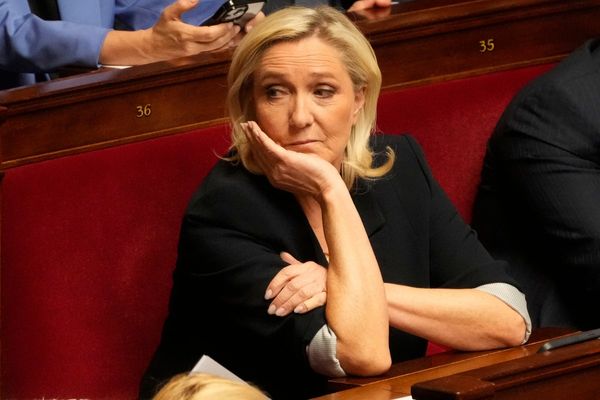
It has been 10 months since Paula Badosa was informed by her doctors that her career may be over. During the 2023 season, not long after she had stood as the No 2 player in the world, Badosa suffered a stress fracture in her back that had left her in significant pain and forced her to withdraw from every grand slamthat year. By last March, the 27-year-old was fighting for her future.
The initial resolution was cortisone injections to manage the immediate pain and inflammation, allowing her to return to the tour even though her long-term future remained uncertain. She has used her time back well. Having spent the past nine months faithfully re-establishing her place among the elite, Badosa broke new ground on Tuesday by reaching the semi-final of a grand slam for the first time.
In the tension-filled final moments Badosa held her nerve to upset Coco Gauff, the third seed and one of the tournament favourites, 7-5, 6-4.
“I’m a bit emotional,” said the 11th seed,. “Overcoming something like this, the last slam, the quarter-finals were very tough. I wanted to play my best tennis. I did it. Coco, at the beginning, she was playing insane tennis. I’m super proud of the level I gave.”
As she struggled to find a way back, Badosa fell out of the top 100 last year, dropping as low as No 140 in May. She has made a remarkable comeback, compiling a run of consistent results and few poor losses. Badosa will now return to the top 10 for the first time since 2022.
A former junior French Open champion, she struggled with depression and mental health problems during her early years on the circuit. She began to rise up the rankings in 2021, reaching No 2 a year later. Even at the height of her success, Badosa struggled under pressure in the grand slams. Last year’s US Open was only the second time she had reached a major quarter-final.
For Gauff, this disappointing performance underlines the significant work still to be done in order to shore up her weaknesses. After ending the 2024 season by winning the WTA Finals, Gauff started 2025 playing the best tennis of her career as she defeated Iga Swiatek in a high-quality match at the United Cup. She entered the Australian Open as the most in-form player.
Her level, however, had not been as high here. While significant improvements to her serve and her forehand have driven her recent success, the latter capitulated against Badosa. She struggled to land routine forehands for much of the match and ended the match with 28 unforced errors compared with seven from her backhand. It was by far the worst shot on the court.
Despite performing so far beneath the standards she sets in less important matches, Gauff took the defeat in her stride. “It’s one of those things that maybe a couple of years ago I would feel a lot more crushed and like the world is ending-type sadness,” she said. “But now it’s just disappointing that I could have done a little bit better in some areas. ”
Against a struggling opponent, Badosa played an extremely smart match. She remained consistent early on, drawing out forehand errors from Gauff with her shot tolerance and defence, and sclosed out both sets with bold attacking play. Badosa broke serve at 5-5 in the first set with a brilliant return game that included three winners. As Gauff retrieved one of Badosa’s two breaks and threatened to pull herself back into the contest, Badosa responded with an excellent hold, a forehand winner sealing the victory.
“A year ago, I was here with my back that I didn’t know if I was going to retire,” she said. “Now I’m here, playing against the best in the world. I won today, I’m in the semi-finals.”







